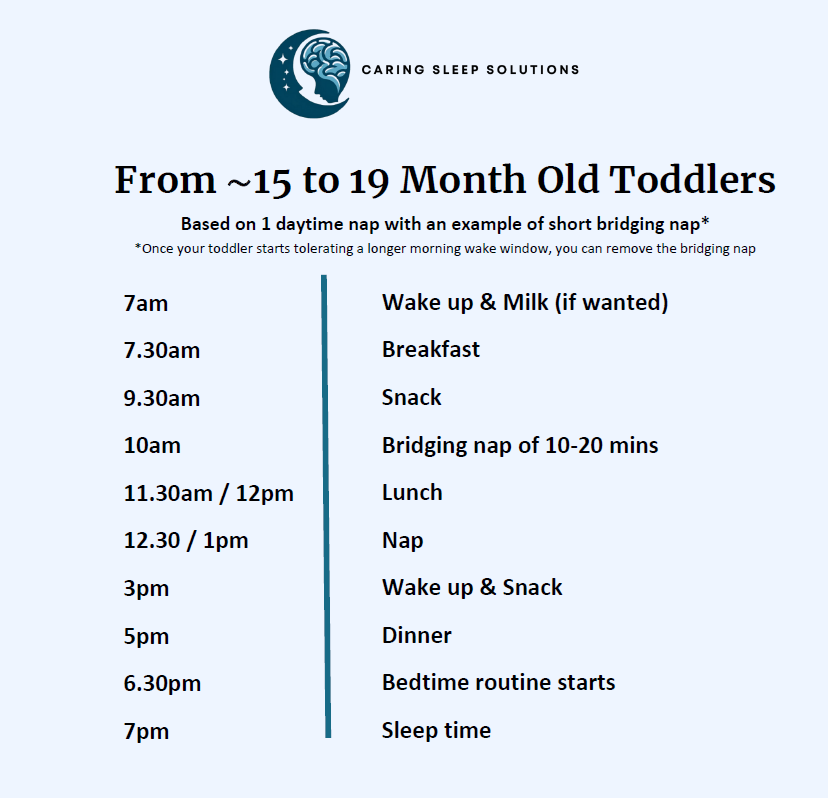It can seem like just yesterday your baby dropped to two naps, and now you’re wondering when they will make the next transition to just one nap a day.
This milestone typically occurs between 12 and 18 months, with many babies making the switch around 14 or 15 months.
This change can bring new challenges, but with some tips and a bit of patience, you can help your baby adjust smoothly.
Signs Your Baby Is Ready to Drop to One Nap
Recognizing when your baby is ready to move from two naps to one is crucial. Here are the key signs:
- Morning Nap Interferes with Afternoon Nap: If your baby takes a long morning nap and then struggles to fall asleep in the afternoon, it might be time for a change. This interference often results in the afternoon nap being pushed later, which can then affect bedtime.
- Skipping the Afternoon Nap: Sometimes, babies who have had enough rest from their morning nap will simply skip their afternoon nap, leading to a very long wake window until bedtime, causing overtiredness.
- Resistance to the First Nap: Another common sign is when your baby starts resisting their morning nap. They might not seem tired at their usual nap time, leading to a later nap and a subsequent impact on the afternoon nap.
For many babies, the clearest sign is when they can stay awake comfortably longer than the usual 2.5-3 hours between waking up and their first nap.
So Which Nap Disappears?
Typically, it’s the morning nap that disappears, but this doesn’t happen abruptly. During the transition, some days may still involve a short morning nap to bridge the gap to a longer afternoon nap. This process can take several weeks as your baby adjusts to staying awake for longer periods.

How to Transition from Two Naps to One?
Transitioning from two naps to one involves a period of adjustment. Here are some tips to help:
- Gradual Change: Gradually push the morning nap later by 15-30 minutes every few days until it becomes a post-lunch nap.
- Engaging Activities: Keep your baby busy with stimulating activities in the morning to help them stay awake longer.
- Adjust Bedtime: Be prepared to move bedtime earlier if necessary to ensure your baby doesn’t become overtired.
During this transition, it’s important to keep the morning nap as long as possible, even if it’s just a short 10-minute nap, so called bridging nap. This small nap can help reduce sleep pressure and make it easier for your baby to make it to their afternoon nap without becoming overly tired.
Ideal One Nap Schedule
Ideally, when toddlers fully transition to one nap, it occurs after lunch and lasts about 2 hours. Some may sleep for 2.5 hours, while others might only sleep for 1.5 hours.
This nap should ideally end around 4 to 4.5 hours before bedtime, allowing the toddler to stay awake comfortably without becoming overtired.
For instance, on a typical 7 AM to 7 PM schedule, your child would nap around 12:30/1 PM and sleep until about 3 PM.

Handling Early Nap Challenges
If your baby struggles to stay awake until after lunch, try to push the nap as late as possible without making them overtired. Fresh air and engaging activities in the morning can help keep them awake. If the nap ends up being too early, you might need to consider an earlier bedtime to prevent overtiredness.
Dealing with 18-month Sleep Regression During Nap Transition
Around 18 months, many toddlers experience a sleep regression, which can coincide with the transition from two naps to one. This period can be challenging as your child adjusts to longer wake times. The overtiredness resulting from this transition can lead to increased night wakings and early mornings.
To manage this, maintain a consistent sleep routine, offer an earlier bedtime if necessary, and be patient. An earlier bedtime can help reduce overtiredness and improve overall sleep quality during this adjustment period.
Conclusion
Transitioning from two naps to one is a significant milestone in your baby’s development. By recognizing the signs and following these tips, you can help your baby adjust smoothly. Remember, every child is different, so be flexible and patient as you navigate this transition. Remember the power of short bridging naps of 10-20 minutes to keep your toddler from becoming overtired.
I’m Olena, a founder of Caring Sleep Solutions. I’m a neuroscientist, and a Pediatric Sleep Consultant and Adult Sleep Coach, and most importantly, a mother who has experienced severe sleep deprivation. For more tips and insights on improving sleep for both you and your little one, follow me on Instagram.
To discover tailored packages that can help enhance your child’s sleep, feel free to reach out and explore our packages.

